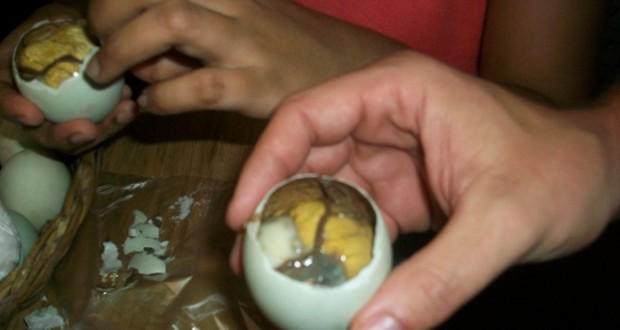
Goldfish are susceptible to disease and once infected can have a greatly shortened life span. The most common reasons goldfish get sick are if the fish tank is dirty, due to poor filtration, the water and oxygen levels are too low, the temperatures are either too warm or too cold and being improperly fed. Prevention and early detection is the key to help ensure healthy goldfish.
Ich (Ick, Ichtyopthirius, Freshwater White Spot Disease)
Symptoms: Body and/or fins are covered with tiny white dots and rapid gill movements may be noticed in later stages.
Ich is one of the more common diseases of goldfish, and if left untreated, it can be fatal to your fish. Treatment can take many days to cure, and it should be treated promptly since Ich is highly contageous.
The disease is easy to identify. The white dots are small and sometimes numerous, about a millimeter in size. They are easiest to see on the fish’s transparent fins. When on the fish, medications have no affect on Ich. As the parasite grows, however, it will eventually drop off the fish to reproduce. At the bottom of the tank, it will form a cyst (also resistant to medications) and soon hatch into hundreds of baby parasites which will seek a new host animal. This process weakens the fish and leaves holes in the fish’s body. A badly afflicted fish will likely display rapid gill movements.
Remedy: Contact your vet or pet store for further instruction. Several effective medications are available. It is wise to treat your main tank in order to ensure that you have successfully removed all traces of the parasite from it (although it may be beneficial to also move a badly afflicted fish to a quarantine tank). Leave the filter running, but remove any activated carbon because this substance takes medicine out of the water.
Tail or Fin Rot
Symptoms: Fin rot is a general term for necrotic loss of fin tissue, resulting in split or ragged fins. It is usually the edge of the fin that is attacked, although occasionally a hole may appear in the middle of the fin. The appearance of fin rot can vary between a distinct, semi-circular “bite” shape and a “shredded” effect.
Nearly all cases are caused by stress, fear or poor environmental conditions. Fin rot is often one of the first signs that a goldfish disease problem exists and all cases should be investigated to determine the underlying cause.
Remedy: You must first identify and address the cause of stress, this could be due to a fish disease such as parasites, overcrowding, low oxygen levels, bullying or poor water quality. If caught early, removing the stressor may be sufficient.
Medications used to treat the symptoms include Melafix, Maracyn, salt, antibiotics as a last recourse (such as Tetracycline or Sulfa-based products), hydrogen peroxide bath, or applied to the area (be very careful that this does not touch the gills since this can be fatal).
Fungus
Symptoms: Grey, or grey-white tufts of cottony material covering areas of the fish’s body, sometimes covering almost all of the fish’s skin.
When fungus is suspected, there could be several possible causes. All are somewhat similar in appearance, and include common fungus, mouth fungus, and body fungus.
Fungus normally indicates there is another problem which has weakened the goldfish. Some possibilities include parasites or even an injury due to spawning or due to colliding with a tank decoration. Whatever the secondary reason, it should be found and taken into account when the fish is treated for fungus.
Remedy: Improve water conditions and treat promptly. Standard anti-fungal medications, such as methylene blue, are usually very effective, but may affect filtration and water quality. When the disease occurs on open wounds, aquarium salt at a dose of 1-3g/litre can help reduce salt loss.
Constipation
Symptom: Goldfish is having trouble passing faeces, or are constantly trailing behind the fish. This is often caused by a diet without enough variety, or by feeding too many starchy foods.
Remedy: This problem is easily solved by changing to a diet with more variety and roughage. Some suggestions are live foods, peas, spinach, and tubifex worms. Enticing fish to swallow one grain of Epsom salt is also said to be beneficial.
It is also advised that dry fish food be soaked in water until it is soft before feeding. This helps in digestion, and also reduces the likelihood of constipation.
Dropsy
Symptoms: Dropsy is a bacterial infection that infects the goldfish from the inside and causes the scales to stick out from the goldfish’s body. Dropsy can be caused by a bacterial infection which causes kidney failure in goldfish. The problem is, by the time you see the symptoms of dropsy on your goldfish, the damage to the kidneys has already been done.
Remedy: The main defence for dropsy is to keep your goldfish parasite free, which will reduce the chances of bacterial infections, which in turn will reduce the chances of a kidney failure. A broad spectrum anti-bacteria treatment is the best option in most cases.
Pop Eye
Symptoms: Fish’s eyes stick out unusually. It is important to realise that some varieties of goldfish have eyes which naturally protrude, like the Moor, the Celestial, and the Water Bubble Eye. With juveniles, it is possible their eyes are developing into their adult configuration. Sometimes a fish will not develop telescopic eyes until it is two years of age.
Pop eye, however, is a condition which causes a fish’s eyes to protrude away from the fish’s head in an unusual way. Pop eye is usually caused by septicemia or tuberculosis.
Swim Bladder Disorder
Symptoms: A goldfish with swim bladder disorder will periodically float on its side on the water’s surface or swim on its side a great deal. Usually it will only be periodically, with the fish sometimes able to swim normally. If a fish lies on its side on the water’s surface without moving at all even after touching it, it may indicate a fatal kidney problem which fancy goldfish are prone to.
Remedy: Discourage the goldfish to swim greedily to the surface to suck down food, by soaking flake food before feeding so that it will sink lower in the water so the goldfish will not intake as much air. Also, the food will be less dry and instead of taking on moisture in the digestive tract and swelling up, causing blockages, the food will be moister and easily digestible. An increase of vegetable content in the goldfish’s diet may also help, as well as the addition of aquarium salt to the water.

Source by Tim D Smith
 Vitamin Agent The Health & Naturalistic Source
Vitamin Agent The Health & Naturalistic Source





